Issue Archive
Table of Contents
BLOOD COMMENTARIES
HOW I TREAT
How I treat anticoagulant-refractory thrombotic antiphospholipid syndrome
The standard therapy for thrombotic antiphospholipid syndrome (APS) is lifelong oral anticoagulation with a vitamin K antagonist. However, a small minority of patients with APS have recurrent thrombosis despite adequate anticoagulation. Cohen and Isenberg present their approach to this difficult clinical scenario with 3 illustrative cases.
CLINICAL TRIALS AND OBSERVATIONS
An epitope-based approach of HLA-matched platelets for transfusion: a noninferiority crossover randomized trial
CME
Clinical Trials & Observations
Platelet refractoriness, which increases both adverse patient outcomes and health care expenses, is often caused by antibodies directed against HLA antigens. HLA-matched platelets may provide better platelet reponse but are expensive, require a large pool of donors, and may not yield fully matched platelets. In a prospective study reported in this month’s CME article, the authors found that HLA epitope–matched platelets based on short amino acid sequences within HLA molecules are noninferior to HLA-matched platelets, allow higher rates of successful matches, and require a smaller donor pool.
GENE THERAPY
Factors associated with outcomes after a second CD19-targeted CAR T-cell infusion for refractory B-cell malignancies
Clinical Trials & Observations
CD19-targeted chimeric antigen receptor (CD19 CAR) T cells have efficacy for relapsed/refractory B-cell malignancies, but relapses occur in a high percentage of patients. Gauthier et al report that second CAR T-cell infusions are possible and lead to responses in about 40% of patients, with over 20% complete remissions. The authors further identify factors associated with better responses.
HEMATOPOIESIS AND STEM CELLS
SLFN11 promotes stalled fork degradation that underlies the phenotype in Fanconi anemia cells
Fanconi anemia (FA) is a DNA repair disorder associated with sensitivity to interstrand cross-linking agents such as mitomycin C. FA proteins promote cross-link repair, but they also protect stalled replication forks generated by stress replication. Okamoto and colleagues demonstrate that in the absence of FA proteins, the DNA/RNA helicase SLFN11 promotes nuclease destruction at replication forks and SLFN11 knockdown reduces fork degradation and improves cell survival of FANCD2 knockout cells.
Germline IKAROS dimerization haploinsufficiency causes hematologic cytopenias and malignancies
LYMPHOID NEOPLASIA
Molecular basis of ETV6-mediated predisposition to childhood acute lymphoblastic leukemia
Germline variants of ETV6 have been implicated in susceptibility to pediatric acute lymphoblastic leukemia (ALL). Nishii and colleagues demonstrate heterogeneity of germline mutations in ETV6, with some mutations affecting tumor suppressor activity and others appearing “wild-type-like.” Studies of the molecular landscape of ETV6-associated ALL demonstrate that the secondary mutations and the transcriptional program associated with divergent ETV6 mutations are also different, supporting a complex interaction between inherited and acquired genomic alterations in the pathogenesis of ALL.
Burkitt lymphoma in the modern era: real-world outcomes and prognostication across 30 US cancer centers
Clinical Trials & Observations
Burkitt lymphoma (BL) is an aggressive disease with excellent survival reported in small prospective series using current chemoimmunotherapy. Evens et al report real-world experience with BL in a study of 641 adult patients from 30 US cancer centers, demonstrating progression-free and overall survival inferior to those reported in clinical trials and identifying risk factors for adverse outcomes.
MYELOID NEOPLASIA
Germline genetic factors influence the outcome of interferon-α therapy in polycythemia vera
Brief Report
Interferon-α (IFNα) therapy can induce both hematologic responses (HR) and molecular responses (MR) in polycythemia vera (PV). Jäger and colleagues investigated potential germline polymorphisms influencing IFNα response. They report that while no polymorphisms influence HR, cooccurrence of 2 specific protein-coding variants in the interferon λ4 (IFNL4) locus appears to be associated with higher rates of MR.
PHAGOCYTES, GRANULOCYTES, AND MYELOPOIESIS
Neutrophils promote clearance of nuclear debris following acid-induced lung injury
Brief Report
Neutrophils traditionally have been viewed as a source of collateral damage in the setting of inflammation. Oved et al add to the growing evidence that they also have an important role in tissue healing. They demonstrate that neutrophils acquire a MyD88-dependent ability to phagocytose and degrade extracellular DNA, limiting tissue injury at the site of sterile inflammation.
RED CELLS, IRON, AND ERYTHROPOIESIS
THROMBOSIS AND HEMOSTASIS
Emicizumab for the treatment of acquired hemophilia A
Clinical Trials & Observations
Acquired hemophilia A (AHA) is caused by anti–factor VIII (FVIII) antibodies and is a severe bleeding disorder usually treated with bypassing agents and immunosuppressive therapy. Knoebl and colleagues present data on 12 patients with AHA who were treated with the bispecific antibody emicizumab. They confirm that this treatment yields effective control of bleeding, shortened hospitalization, and recovery of FVIII levels with a reduced requirement for immunosuppressive therapy.
TRANSPLANTATION
Double unrelated umbilical cord blood vs HLA-haploidentical bone marrow transplantation: the BMT CTN 1101 trial
Clinical Trials & Observations
The authors present the results of a Blood and Marrow Transplant Clinical Trials Network (BMT CTN) trial randomizing 368 patients to cord blood vs haploidentical allogeneic stem cell transplantation. There was no difference in the primary endpoint of 2-year progression-free survival. However, the prespecified secondary endpoints demonstrate that haploidentical transplantation yields lower nonrelapse mortality and improved 2-year overall survival, suggesting that haploidentical bone marrow is preferable to cord blood as the donor source.
BLOOD WORK
CONTINUING MEDICAL EDUCATION (CME) QUESTIONS
-
Cover Image
Cover Image
![issue cover]()
Scanning electron microscopic view of an mDia2-deficient enucleating late-stage bone marrow erythroblast carrying 2 extruded nuclei. See the article by Liu et al on page 398.
- PDF Icon Front MatterFront Matter
- PDF Icon Table of ContentsTable of Contents
- PDF Icon Back MatterBack Matter
- PDF Icon Editorial BoardEditorial Board
Advertisement intended for health care professionals
Email alerts
Advertisement intended for health care professionals



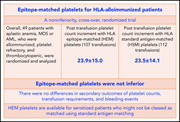

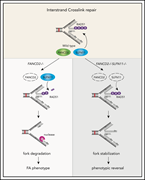
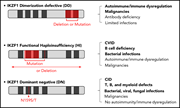

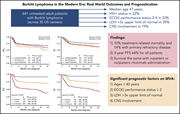

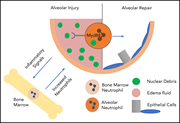
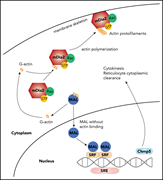
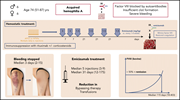
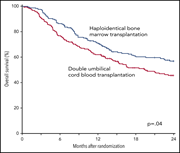

Matching epitopes in platelet refractoriness
Clinical Trials & Observations